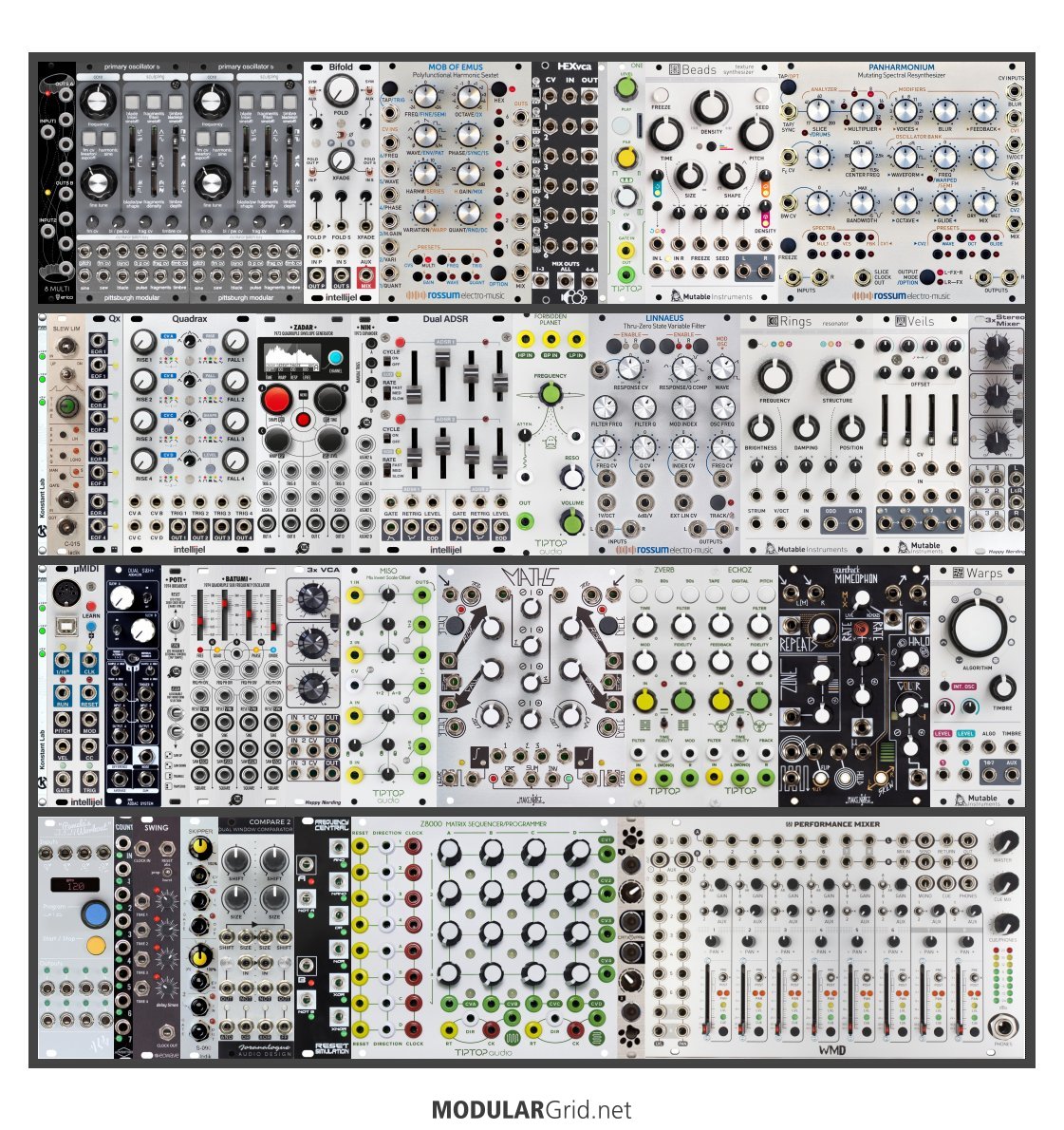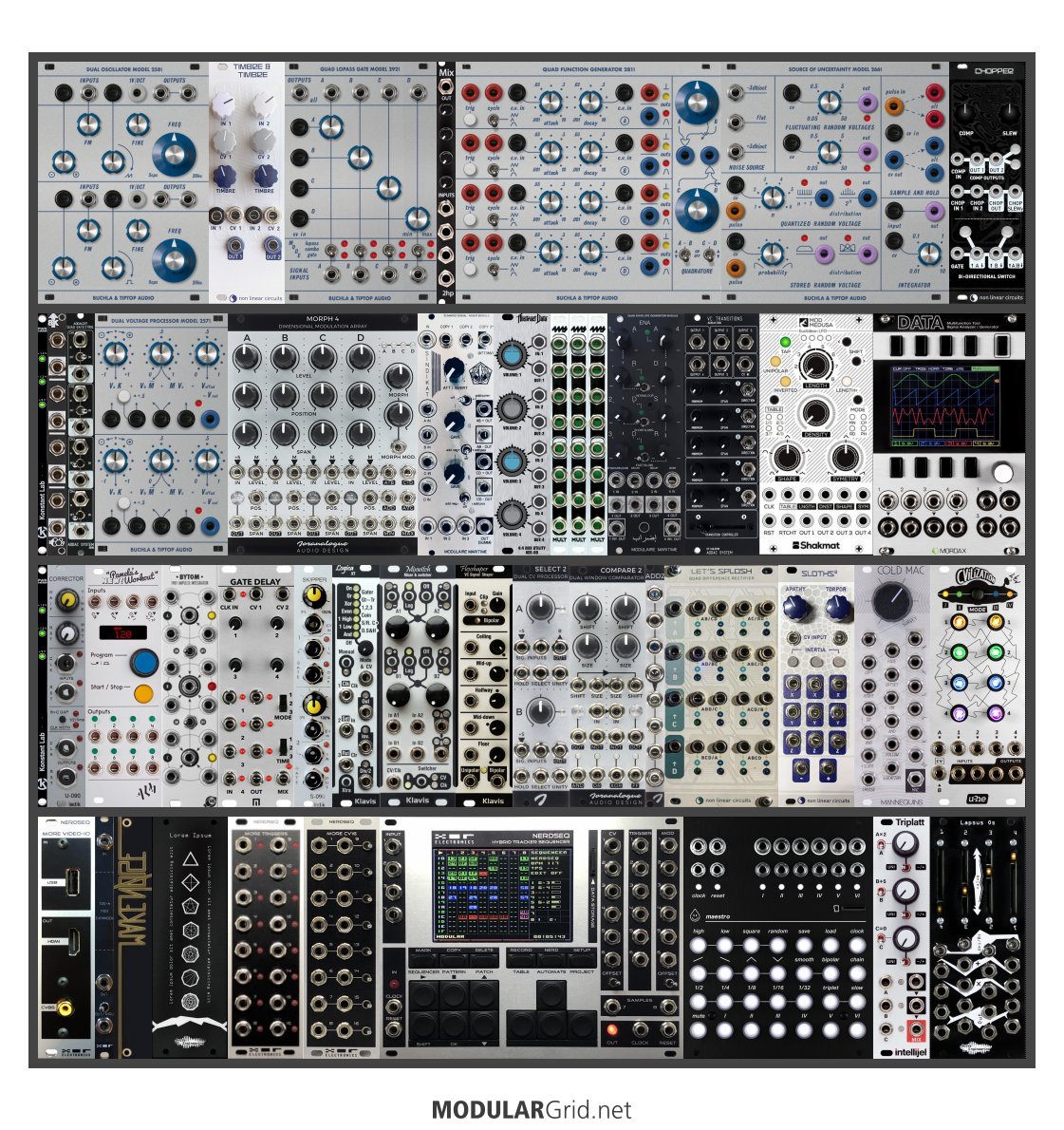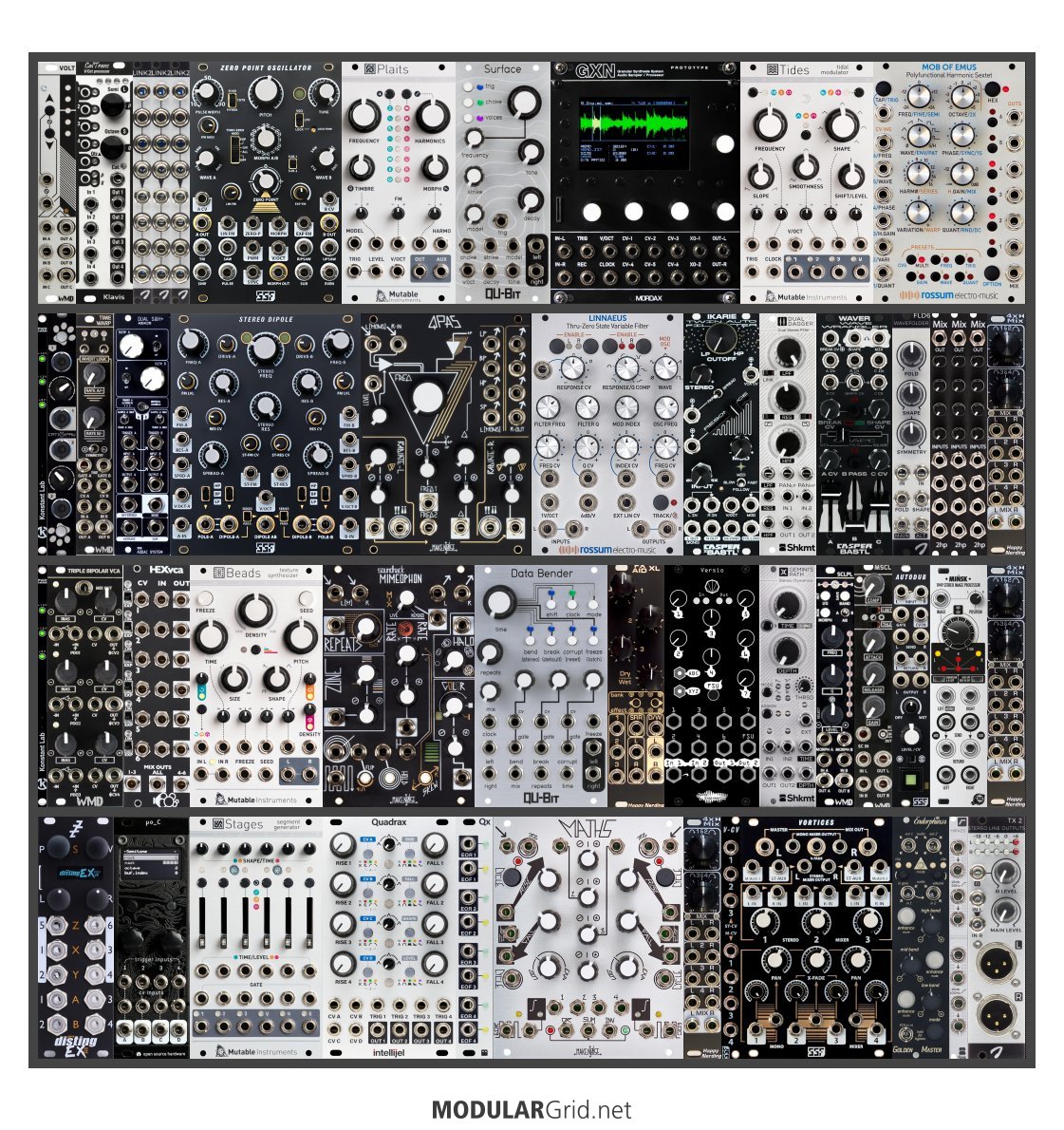OK...now that the 416 hp cab is in play, I did some major adjustments to the initial version of that. There was a lot of superfluous stuff in that, and that was dealt with pretty quickly. For one thing, the only mult that's in here now is the 1 x 8 Erica buffered mult on the top row. As for the rest, just use inline mult widgets, and you'll be fine; you don't need several buffered mults, as their primary use is to keep scaled/quantized CVs on pitch by avoiding voltage sag. The Studio Electronics mixers also went away, as they're just too big for a build of this size. Once I got things pared down to size, I dove into the rework. So...

On the layout: things have been majorly regrouped in favor of function groupings, instead of splaying out all of the various "voices" all over the build. This actually makes the result much more intuitive and easier to patch.
Top row: This is all audio. The buffered mult is first, then the two Pitt oscillators, and then the Bifold. After this, you have the Mob of Emus...and I gave that a Bubblesound hex VCA so that every output of the Mob can now be brought under modulation control via the VCAs. The ONE got co-located with the Beads (a sensible pairing) and then the Panharmonium ends things up with more VCO processing.
Second row: Modulation left, filtering right. The mod sources here (except for a slew limiter, which fits into the signal flow between your MIDI interface and the buffered mult for the oscillator CVs) are all envelopes: Quadrax, Zadar, Dual ADSR, and the Quadrax and Zadar have their expanders. The other side is mostly filtering: Forbidden Planet, Linnaeus, Rings, then a Veils gives you CV control over the levels of four signals. Now, how that works is like this: if you wanted a signal via the Linneaus AND the Rings, you'd patch the left outs into the first and second VCAs, and the rights go to the third and fourth. With the way that the Veils' "breakout bus" works, you then take outputs from 2 and 4, and then you have two stereo pairs under full VCA control. The last bit there is a stereo summing mixer that lets you sum down three stereo signals to one stereo output pair.
Third row: Again, this is split with more modulation and control on the left, and your FX on the right. The MIDI interface is first, then a more complex dual sample and hold with an internal noise source. After that, the Batumi (with Poti), a triple linear VCA for CV/mod control over modulation signal levels, and the MISO fits in before the Maths. Then the FX themselves, with the two Tiptop modules up first, then the Mimeophon and Warps. The Dual Black FX was removed mainly due to redundancy, plus the new output mixer allows a lot more flexibility in terms of FX routing, as you'll see.
Bottom row: Control on most of this, with the main mixer taking up the right end. The left end's small modules all play around with timing: the Pam's, an Adventure Audio clock counter, a quad pulse delay for shifting/swinging clock pulses, a dual-channel stochastic pulse skipper, then a Joranalogue dual window comparator, which allows you to pick off gates from modulation signals or when any CV exceeds a given value. This is a window comparator, also, so you actually get THREE pickoffs per inputted mod signal. And all of these timing modifiers get down to a dual Boolean gate from Frequency Central. All of this allows you to really mess with the clocking and triggering, especially where the control of the different layers in the Z8000 are concerned. One more little module gives you stereo audio inputs, and this is located next to the WMD Performance Mixer, which contains your final level VCAs per input, gives you two different AUX busses to feed your FX from the strips (and this is where those two Tiptop modules come in, since you can simultaneously use the ZVERB and ECHOZ and have them return to the mixer in parallel and NOT series, which is more of a pain to control), panning, your headphone preamp, and a number of other useful procedures.
Lastly, you'll see two little 1U modules on the left side on rows 2 and 3...those are KonstantLabs PWRchekrs, which let you have visual feedback of the health of your DC busses while you use the system.
Now, yes, there's a number of things that were removed...and really, I don't think you'll miss them at all. The big key here was to try and "multitask" as many modules as possible. For example, the dual S&H before was just a dual S&H; in this build, the noise source is integral with that and the module has more complex routings internally. And some other things were added, like the hex VCA after the Mob of Emus, which now lets you "strum" through the six different "voices" and then sum this down, either as stereo (with the lefts in 1-3, rights in 4-6) or mono (just use the mono out). There's a lot of that in here now. But this now has a pretty good balance between modulation, control, generation, modification, and utility across both the audio AND mod/control signal paths. And most importantly, there's plenty of that to go around to really make the audio aspects here shine.




